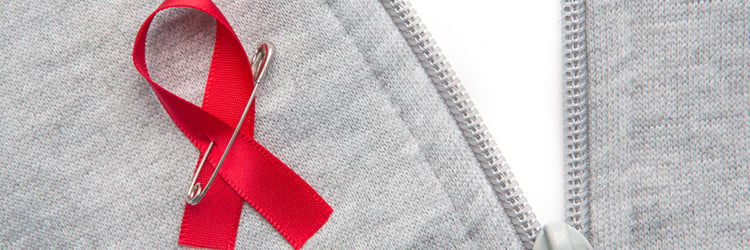How Plan for America aims to end the HIV epidemic
“Ending the HIV Epidemic: A Plan for America,” is a federal initiative aimed at reducing new HIV infections in the United States by at least 90% by 2030. This is possible in part because of PrEP, preexposure prophylaxis, also known as preexposure prevention with medications. These medications can reduce the risk of getting HIV from sex by about 99% and the risk of getting HIV from injection drug use by at least 74%.
PrEP is a daily medication that helps prevent HIV in people who are at risk. Two PrEP medications are FDA approved: the HIV antiretroviral drugs Truvada® and Descovy®. Unfortunately, not everyone at risk for HIV is taking PrEP.
Knocking out new HIV cases - Test, treat and prevent
In June 1981, the CDC published an article in its Morbidity and Mortality Weekly Report (MMWR) about a rare lung infection that was found in five previously healthy gay men in Los Angeles. That article marks the beginning of the AIDS epidemic, though the CDC wouldn’t use the term AIDS until September of 1982, and HIV wouldn’t be identified until a year later.
Since 1981, HIV has claimed more than 700,000 lives in America. New diagnoses have declined since the peak in the late 1990s, but public health officials are concerned because the number of new HIV infections remained stable from 2013 to 2017. According to HIV.gov, The CDC estimates that the decline in HIV infections has plateaued because prevention and treatment isn’t reaching everyone who needs it.
A recent MMWR study found that 38% of new HIV cases each year were transmitted from people who didn’t know they had HIV at all. Even more strikingly, 43% of cases were transmitted from people who were aware of their HIV status but were not in HIV care, and 20% were from people who were receiving HIV care but not yet virally suppressed. Despite the availability of effective and well-tolerated HIV care medications, only 61.5% of HIV patients had viral suppression within 6 months of their diagnosis.
“The numbers are getting better over time,” comments Jim Hellinger MD MSc, an infectious disease specialist and AllWays Health Partners medical director. “But we clearly have a long way to go. Decreasing the number of new HIV infections by 75% in 5 years (from 38,000 to 9,500) or by 95% in 10 years (down to 1,900) is a really huge task.”
A Plan for America & Ready, Set, PrEP
The MMWR study proposed an initiative to significantly reduce HIV in the United States called “Ending the HIV Epidemic: A Plan for America,” which was taken up by the current administration in 2019. The goal of the plan is to reduce new HIV infections in the United States by 75% in 5 years and by 90% by 2030. An important part of this plan is the “Ready, Set, PrEP” program, designed to make PrEP more readily available by offering it at no cost to people without prescription drug insurance coverage.
To qualify for Ready, Set, PrEP, people must test negative for HIV, have a valid PrEP prescription, and not have prescription drug coverage. The Department of Health and Human Services will work closely with healthcare professionals at more than 12,000 service sites and 1,400 health centers nationwide. In addition, CVS Health, Walgreens, and Rite Aid have donated their dispensing services. By March 30, qualified patients will be able to get PrEP at over 21,000 combined CVS Health, Walgreens, and Rite Aid locations or through mail order at no cost. The pharmacies will also provide patient counseling and promote adherence to the PrEP regimen.
As mentioned, Truvada and Descovy are currently the only PrEP medications approved by the FDA. Both pills have very few side effects and are very effective. They are covered by AllWays Health Partners as part of our FlexRx pharmacy program. Check our online formulary for more information.
Encourage your patients to get tested and get PrEP
The CDC recommends all adolescents and adults get tested at least once for HIV as a routine part of medical care, and that gay and bisexual men and others at high risk be tested more frequently. Encourage your patients to get tested for HIV, even if they don’t think they have it.
According to Dr. Hellinger, "It does seem that the above numbers are getting better, but we clearly have a long way to go. We need to do better at testing for HIV. We also need to get people onto effective therapy. One pill a day (with almost no adverse effects) can save lives and help us get closer to our goal of reducing HIV infections to 9,500 by 2030."
"We can also do better getting the word out for persons with HIV risks to step up and ask for PrEP," Dr. Hellinger adds. "We can do better encouraging and training clinicians to offer PrEP, and publicizing which providers offer PrEP. Many of the medical groups specifically list this service by their clinicians. Broader uptake of PrEP will have a big role in saving lives and knocking out HIV."
